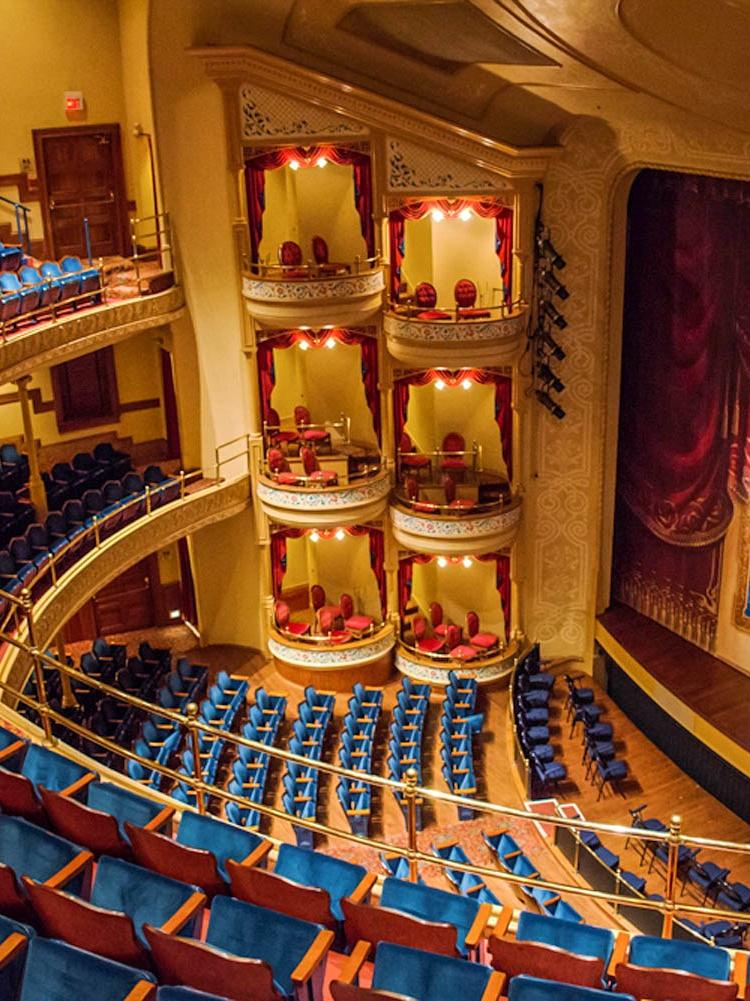More of a visual learner? Read the transcript of this week's Galveston Unscripted podcast episode below:
Tune in every Friday for a brand new episode of the Galveston Unscripted podcast.

The Grand 1894 Opera House serves as a beacon of hope for Galveston and other communities across the country, working to revitalize their downtown and historic theaters and return live performances to their communities. From Anna Pavlova to Ray Charles, from the Beach Boys to Willie Nelson, and from Liza Minnelli to James Earl Jones. These are a few names that have graced the Grand 1894 Opera House stage. The Grand 1894 Opera House has hosted various performances, including plays, musicals, and concerts. It has been graced by some of the most prominent acts of the time and continues to entertain and inspire audiences today.
Arts and entertainment have been an essential part of building communities for centuries. Galveston, a Gulf Coast Hub for entertainment, is home to the Grand 1894 Opera House, the State Opera House of Texas, built-in 1894 by local businessmen striving to have the finest opera house in Texas. The Grand 1894 Opera House has been a cultural hub in the community since the early 19th century.
The Grand is not only a significant cultural landmark in Texas. , but it also holds a significant place in the history of Texas and American theater. The Grande is the oldest continually operating opera house in the state of Texas, and it stands as a testament to the enduring spirit and resilience of the people of Galveston.
The theater was built as Galveston was experiencing a boom in population and a growing desire for entertainment. The Grand Opera House was the centerpiece of this cultural movement, serving as a gathering place for the community to enjoy the arts. The theater's architecture, a Romanesque revival style, is a striking example of Victorian theater architecture. Inside it features ornate decoration, including frescoes and a grand chandelier. Located on Postoffice Street at the center of the central business district. It Was designed to seat over 1600 audience members.
When the theater was constructed, it became home to the largest entertainment stage in Texas. The theater was unique because it was built with gas and electric lighting to ensure reliability, as electricity had only been around for a few years. This Grand Opera House has always been a destination for theater enthusiasts, drawing in audiences from all over to witness some of the most spectacular performances of the era from the moment it opened its doors in January of 1895, the Grand Opera House and Hotel was the place to be for the most sought after acts of the time. Several acts didn't only feature humans, but live animals such as horses and camels have made appearances on the grand stage.
The Grand has weathered many storms, literally and figuratively, throughout its long history. One of the most significant challenges it faced was the devastating 1900 storm, which caused immense damage to the city of Galveston and the Opera House itself. The storm's winds and rain ripped off the roof of the Grand, leaving it in ruins and out of commission. However, the community of Galveston rallied together in the face of this disaster. It worked tirelessly to restore the beloved opera house. In the storm's aftermath, the people of Galveston came together to rebuild the Grand. In October of 1901, just over a year after the storm, the Grand Opera House reopened its doors again.
As Galveston experienced severe economic decline, the theater suffered the same fate and adjusted to the community's needs. Over time. The grand underwent various changes throughout the 20th century, including being used as a vaudeville theater and a racially segregated movie theater.
During the 1970s preservation movement that began to take shape in Galveston, the community once again stood tall in working to bring back a live performing arts venue that spoke to Galveston's rich history and culture. In 1974, the Grand was placed on the National Register of Historic Places, recognizing its historical and cultural significance to Galveston and Texas. From the beginning of the preservation movement, Galvestonians had the vision to revitalize entertainment and the arts, and through those people involved and the restoration of the Opera House itself displays the determination of Galvestonians and the importance of arts, expression, and entertainment.
The Grand 1894 Opera House is a historic and cultural treasure that tells the story of Galveston's resilience and determination to preserve its cultural heritage. It's a living reminder of Galveston's rich history and culture. It has continued to be a vital part of the community, entertaining and inspiring audiences for over a century.

Click the image above to listen to more episodes of Galveston Unscripted podcast.